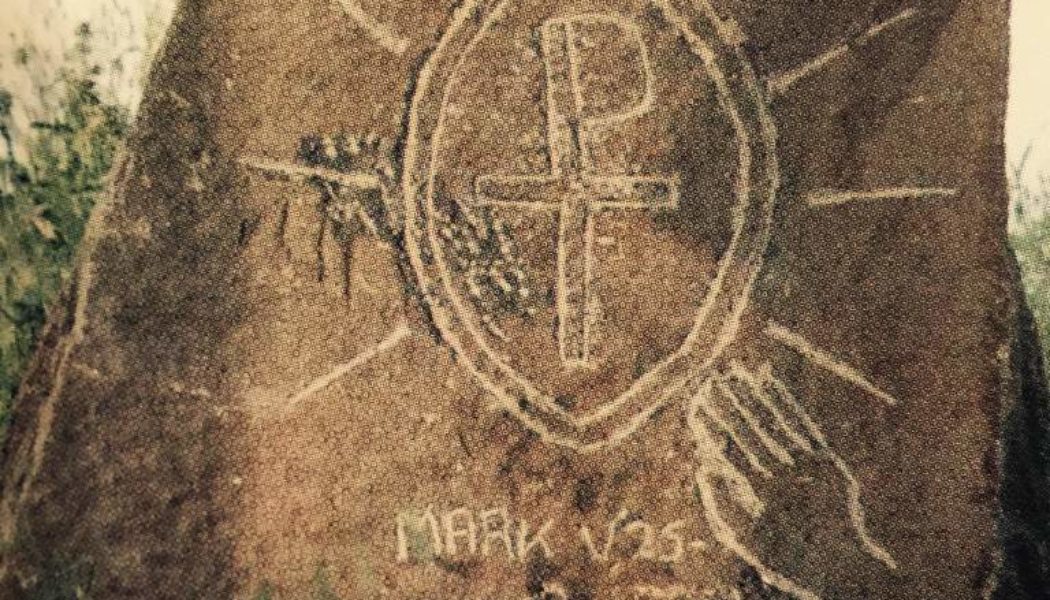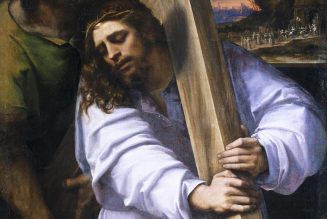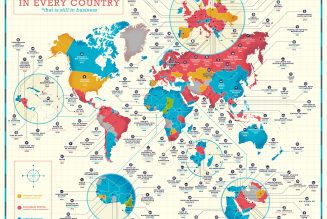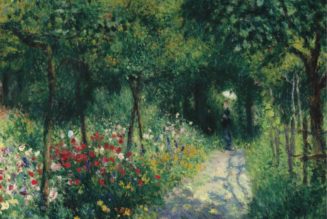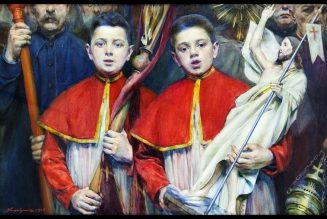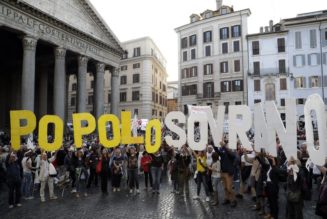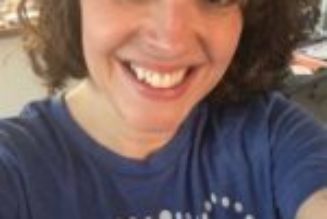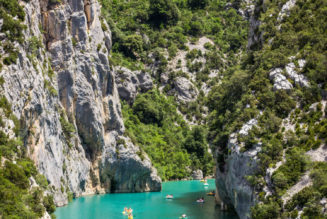Note from the Author: Copy/paste GPS Coordinates listed below into Google Maps to see or travel to each location.
After getting some good rest at a hotel for pilgrims attached to the parish Church of St. Peter in Tiberias–a parish established by the Crusaders in A.D. 1100!–I set out on my first day exploring some of the little-known sights around the Sea of Galilee. The first site I went to was the site of Christ’s healing of the Hemorrhaging Woman–the tragic figure who had lived with a “flow of blood” for twelve years. This site has tragically largely been lost to the world for many years, but I’m doing what I can to increase awareness of it.
Additionally, this site has special significance for me. After returning to the United States after my first overseas assignment, I worked to find out about other Holy Sites from the Gospels that I hadn’t had the opportunity to see yet. One of the places I found out about was this site. In a book published in 1992 titled With Jesus Through Galilee According to the Fifth Gospel, a priest by the name of Fr. Bargil Pixner includes a picture of a modern stone near the traditional location of this miracle (see below).

However, after numerous searches on the internet, I couldn’t find ANY further information about this site or the stone. In 2015, I sent an email to the webmaster of the fantastic site, biblewalks.com, and asked if she had seen this stone in Galilee (she’s an Israeli). She said she had not seen it and, despite looking for it, could not find it. I continued to search online to see if I could find any more information about this monument or any new photos of it. After some time, I concluded my search, ultimately unsuccessful. I imagined the stone must have been buried, overgrown by vegetation, destroyed, or lost since 1992.
However, almost miraculously, three years later, I was looking at Galilee on Google Maps and noticed that Google had added the ability to do Google Street View to select roads and trails around the Sea of Galilee. I remembered Fr. Pixner saying in his book that ancient tradition placed the location of the miracle at a place in between Capernaum and Tabgha (the site of Christ’s Feeding of the 5,000). I zoomed into that approximate location via Google Street View and began doing my search virtually from my couch in Minot, North Dakota–technology is incredible…haha!
As I looked around on Google Street View, I tried to look to the side of the road and trail since it appears in Fr. Pixner’s picture of the stone that it was in some kind of grassy area. I looked around and couldn’t see anything in the trees/grass off the road and trail closer to the Sea of Galilee. Then…all of a sudden, a large rock alongside a paved trail in between the Sea of Galilee’s coastline and the road caught my eye! (See screenshot below)

I moved my view closer to the rock, and–sure enough–I had virtually re-discovered the Stone of the Hemorrhaging Woman!

Since re-discovering this monument at the site of one of our Lord’s miracles, I was determined to travel back to the Holy Land to see it in-person, get pictures of it, and spread the word through the world of its existence and location. I also noticed from the image in Google Street View that the stone appeared to have some calcification from rain and perhaps some erosion. I also made it a part of my resolution to clean this monument to give it the respect it deserves as marking a place our Lord wrought His power. The miracle that happened at this place has been remembered in the Gospels by Christians from every nation around the world over the course of the last 2,000 years and will continue to be remembered until time ends. How blessed I was, a middle-aged guy from the Midwest USA, to be able to render this special service to the Lord and to the whole Church worldwide!
I got in my car, punched in the GPS Coordinates of the rock I had discovered in 2018, and began the 20-minute drive through the lovely Galilean sunshine from my hotel to the site. After nearly 5 years of waiting, I finally would have the opportunity and blessing to see the site and the stone in person!
I reached the coordinates, pulled to the side of the road next to the paved trail, hopped out of the car, and walked towards the stone. There it was!!! (see below) (GPS Coordinates: 32°52’32.36″N, 35°33’40.59″E)


I paused for a short while to thank God for Christ’s miracle that took place here and for allowing me to travel here. After my prayer and after savoring this long-awaited and amazing moment, I set to work restoring the stone. I began using a small scrub brush and some water to scrub off as much of the calcification as I could. Getting this off and letting it dry through the day would help set me up well for my next step in the restoration, which I planned to complete the following morning.
While I was cleaning the rock, I needed to walk down to the Sea of Galilee to get more water. I noticed on my right that I was next to the “Bay of the Sower.” (GPS Coordinates: 32°52’26.59″N, 35°33’36.34″E) This small bay (see photos below) along the Sea of Galilee’s coast is about halfway between Capernaum (Jesus’s home in Galilee where He wrought many miracles) and Tabgha (where He fed the 5,000, preached the Sermon on the Mount, and probably appeared to the Apostles after the Resurrection). Although the Bay of the Sower is not specifically mentioned in ancient pilgrim accounts, *scientifically* it makes sense it was used by Jesus to preach the Parable of the Sower, which the Gospels tell us He preached from a boat because of the size of the crowd listening. The hillside above the bay is naturally formed like a semi-circular theater, but without seats; scientists have actually done acoustic studies here and determined that this bay would have had superb acoustic properties to allow large crowds to hear someone clearly from a boat in the bay. It’s always amusing for me to think that the Lord probably specifically designed this hillside when He created the Earth for the very purpose of having the perfect place to preach this parable!
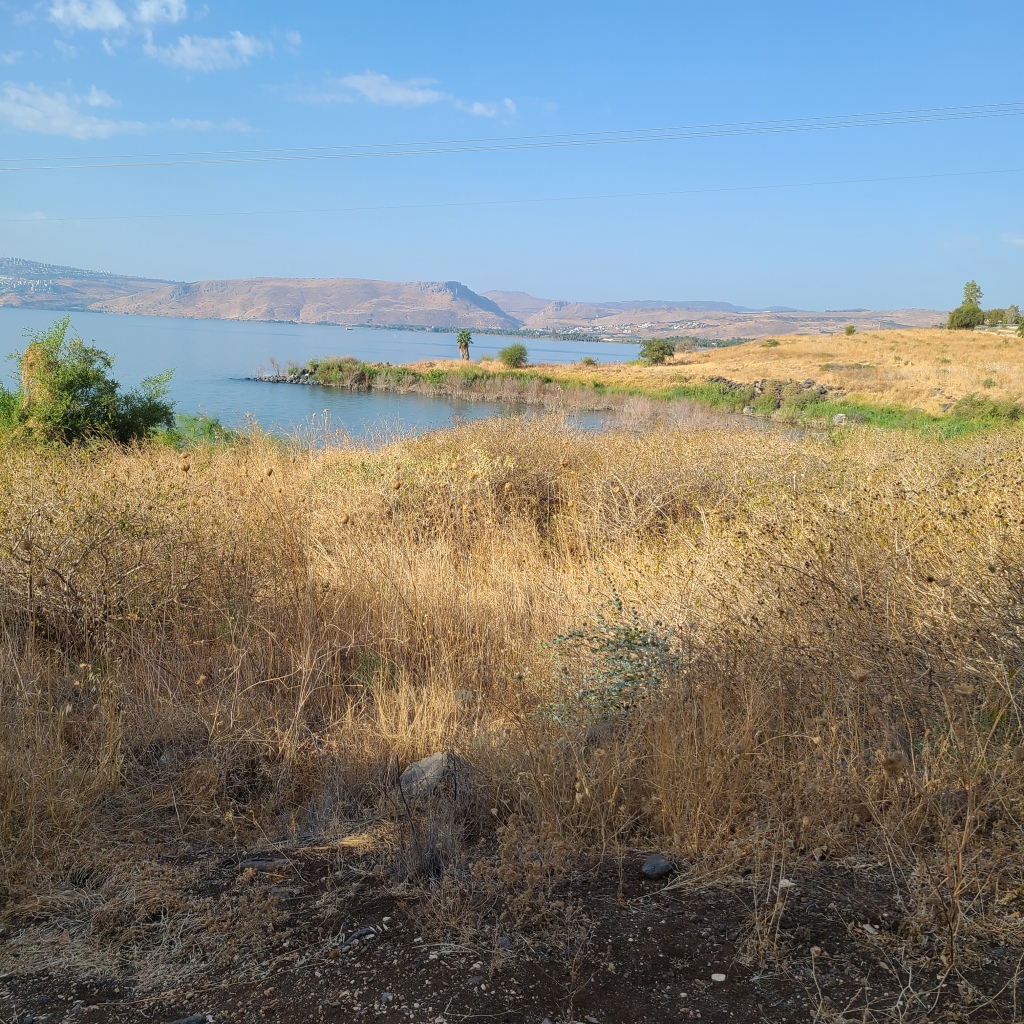

After finishing my initial cleaning of the Stone of the Hemorrhaging Woman, I began on my next major task for the day…
So, for some time, one of the activities I very much wanted to undertake while on a pilgrimage to the Holy Land was boating on the Sea of Galilee. In 2011, I had the chance to be a passenger on a boat with a gas-powered engine as it cruised along the Sea of Galilee, and it was a fantastic experience. But this time, I wanted to actually experience boating on the sea under my own power using a row boat, similar to how the Apostles would have done 2,000 years ago. To make this happen, in Fall 2021 I ordered an Intex inflatable boat on Amazon. It, along with my life vest, took up a lot of space in my suitcase (see below), but I made it work and kept my suitcase under the 20kg air travel limit!

After cleaning the Stone of the Hemorrhaging Woman, I drove along the shore of the Sea of Galilee looking for a good spot to inflate my raft and “set sail.” Much of the shoreline on the sea’s northwestern shore is uninhabited and is some distance from the paved road. I found a deserted area and took about 20 minutes to inflate my boat with its included hand pump. I carefully cleared out some dry, dead trees which had grown up from the sea’s floor, climbed aboard my raft, and began rowing out to sea!

It was an incredible feeling being out on the water on the Sea of Galilee. It was a beautiful day with a slight breeze coming from the northeast. The sunlight lit up the green plantlife and hills surrounding the sea; the water was a pale, beautiful blue. I was potentially boating on one of the sea lanes Christ and His Apostles would have taken numerous times during His ministry between the towns of Bethsaida and Capernaum. I tried to imagine Jesus walking on the water; I tried to imagine what it must have been like during a storm on the sea–which apparently is apt to happen suddenly there from time to time due to gusts of hot air passing over the Sea of Galilee from the Jordanian Desert to the east. One of the details of my time boating on the Sea of Galilee I will never forget is the sound of fish jumping in the water. If only I had a net!

However, I had come prepared and packed a delicious StarKist Tuna Lunch To-Go that I snacked on while “at sea” in honor of the Saintly fishermen who passed on the teachings of Christ to the world.

After boating for some time on the Sea of Galilee and thoroughly enjoying my time on the water (grateful I hadn’t sunk!), I rowed back to shore. I docked my raft at the shore and then decided to take a short swim in the sea. The water was cool, and the sunshine felt warm on my face as I floated in the water. I relaxed, gave thanks, and allowed the sea’s peaceful waves gently toss me around. After swimming back to shore, I packed everything up, carried the raft back to my car, and then deflated it.
I got in my car, turned the air conditioning on, and set my phone’s GPS to my next destination: the town of Daburriya. Daburriya is a small town at the foot of Mount Tabor, the mountain of the Transfiguration of Christ.
There is an ancient Crusader tradition, perhaps based on an even older Byzantine tradition that this town was the place where Jesus, after coming down Mount Tabor after the Transfiguration, healed a demoniac boy at the request of his heartbroken father. A ruined Crusader church, built over the remains of a Byzantine church, commemorates what is believed was the site of this miracle. This place is not well-known, and it took some extensive research for me to discover its exact location. Like with the Stone of the Hemorrhaging Woman, I did a lot of virtual exploring via Google Maps Street View in the city until I was finally able to nail down the exact location of the site. I looked at decades-old photos of the church’s ruins and was able to compare the town’s buildings in the background to the buildings shown by Google Street View until I found similar buildings. I was confident I located the place in the center of the town using this method, although Google Street View wouldn’t let me directly view the site to see if any remains still existed there. I was also unable to find any modern pictures of the site online.
So, after I parked and began walking towards the GPS coordinates of the site, I did not know what to expect. I half expected the ruins to have been removed and/or built over. As I got closer, I noticed there were no historical markers, signs, or anything that would identify this place as somewhere significant. This seemed like another one of the many sites I’ve visited whose importance and history may have been mysteriously veiled over the centuries through the Lord’s providence. To think this simple place once was the site of a church marking a place where God incarnate may have performed one of his miracles made me marvel at our Lord’s humility. Below is a photo of the entrance into the parking lot off the town’s center square, next to which the ruins of the church lay.
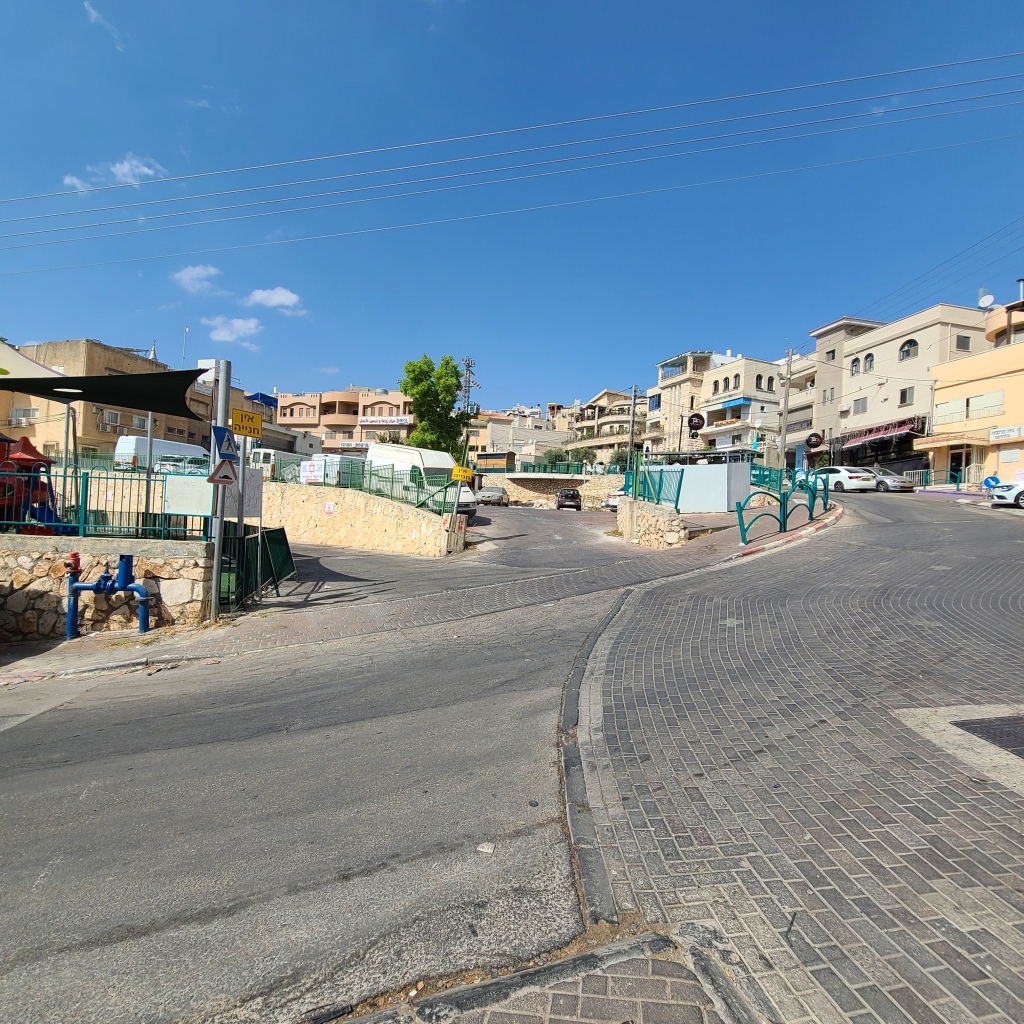
Below is what the ruins of the church look like today (GPS Coordinates: 32°41’29.22″N, 35°22’20.74″E). They are very non-descript, and I was very pleased they weren’t built over!
There was a large tree that had grown up out of one of the corners of the church. As I’ve mentioned in some of my previous blog posts, I often wonder if at some holy places the Lord uses nature to place some kind of “indicator” of where an event–a miracle, a martyrdom, and/or a profession of faith, etc.–*actually* occurred. I wouldn’t be surprised if the single, large, healthy green tree at this place was where Christ stood when He drove the demon from the boy.

I seized the opportunity to use this tree’s shade to get out of the hot Galilean sun. I found a block of stone and pulled out my copy of the Synopsis of the Gospels. The Revised Standard Version English Synopsis of the Four Gospels by Kurt Aland is a great resource that brings together on the same page the accounts of each of the Gospels of specific events. I looked up the page that contained the accounts of this exorcism by Jesus from Matthew, Mark, and Luke. It was powerful reading this story inside the walls of this ancient church and at the place where what I was reading may have actually taken place in history (see photo below).

After reading the Gospel and praying here, I headed out to my next stop: Jesus’s hometown of Nazareth! Nazareth has several holy sites that can be visited.
Dr. Ken Dark, an archaeologist from the University of Reading in the United Kingdom, has done incredible work over the last ten years or so in Nazareth and has published several notable archaeological reports. One of these is a book released in 2019 titled Roman-Period and Byzantine Nazareth and its Hinterland. This book is the first book on this subject by a professional archaeologist and is superb and enlightening. The book contains a map (below) showing the outer limits of areas (indicated by dashed lines) in which Roman-period or Byzantine features and/or pottery have been found, probably indicating the minimum extent of settlement areas in these periods. Among other sites, the Basilica of the Annunciation (the site of the Archangel Gabriel’s appearance to the Blessed Virgin Mary) is labeled site “A”; the Sisters of Nazareth Convent built over the site of Jesus’s childhood home is labeled as site “D”; and the “Synagogue Church” built over the location of Nazareth’s Synagogue in Jesus’s time is labeled as site “E.”

The largest church in the Holy Land is the Basilica of the Annunciation (GPS Coordinates: 32°42’7.84″N, 35°17’52.23″E). It is a beautiful church on the inside and out, and it is so powerful to see the Grotto of the Annunciation–the small cave room of Mary’s house where the angel appeared to her–upon which the church is built.
I’ve had the opportunity to visit this church on a couple previous occasions and, although I would have loved to visit this church once again, I had other places in Nazareth to see and limited time.

The first of these other places is the Synagogue Church of Nazareth (GPS Coordinates: 32°42’10.75″N, 35°17’50.24″E). A pilgrim account dating all the way back to the A.D. 300s identifies that Nazareth’s Synagogue was being venerated by early Christians. A church was later built to commemorate this location. It was on this site Jesus preached to His relatives and friends in Nazareth, telling them Isaiah’s prophecy about the Messiah had been fulfilled in their hearing. It was here where the Nazarenes drove him away from His hometown, rejecting Him and His message.
I was very lucky to get in the church this time–the last time I visited Nazareth in 2012, this church was locked up, and I was very disappointed I wasn’t able to go inside! Over ten years later, I was back!


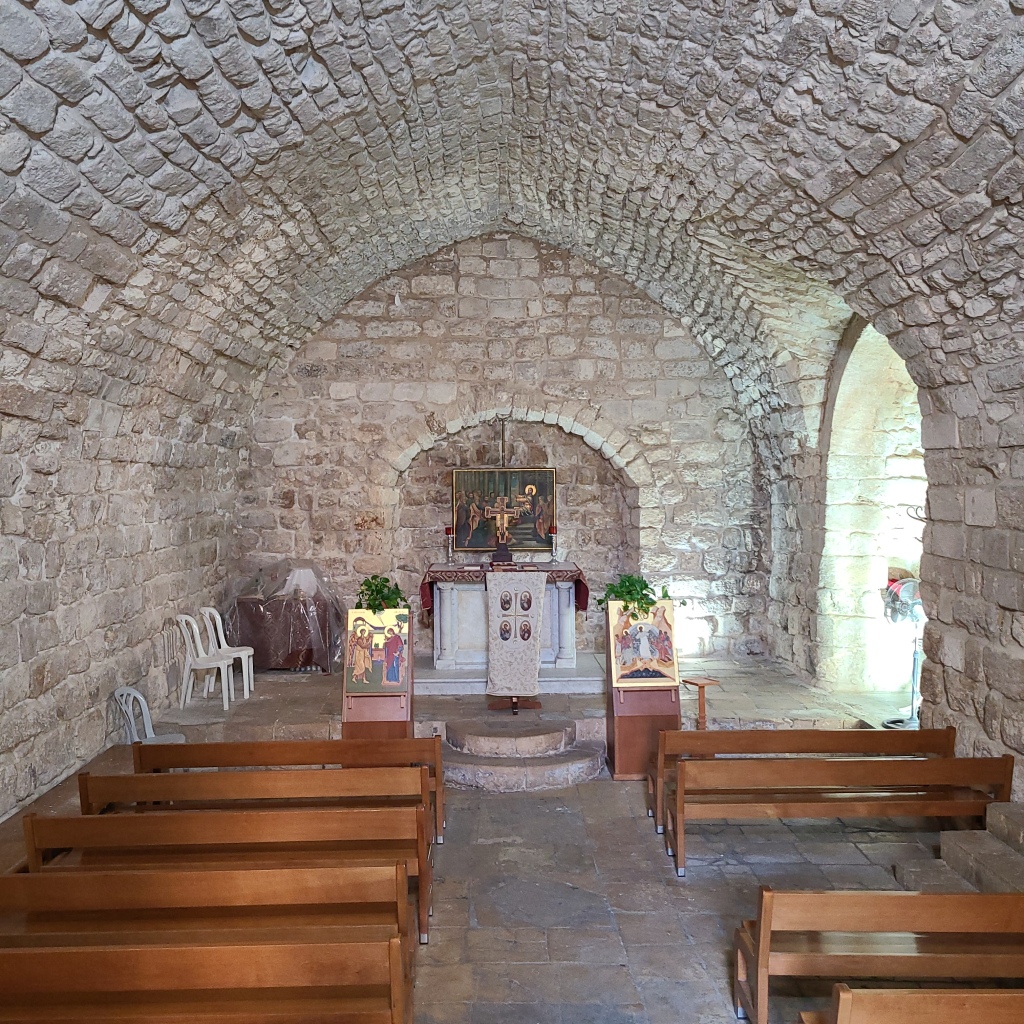

After saying a short prayer inside this church, I needed to make my way to my next stop in Nazareth: the Sisters of Nazareth Convent. Underneath this convent are the remains of a special church known in Byzantine times as the Church of the Nutrition (GPS Coordinates: 32°42’9.22″N, 35°17’48.03″E). Under this church is a small, First Century home that modern scholars believe was indeed the home of the Holy Family in Nazareth. (The church was called the “Church of the Nutrition” in ancient times because it is believed the humble house over which it was built was where Jesus was nurtured and grew to manhood.) The descriptions of this church in ancient sources best line up with the archaeological investigation and finds completed here within the last ten years. An alternative site of the Holy Family’s home is underneath the Church of St. Joseph in Nazareth; although there is also a First Century A.D. dwelling here, the ancient description of the Church of the Nutrition does not line up with this site and the tradition linking it with the Holy Family dates later to the Crusader era.
I was told that in order to see the Holy Family’s home under the Sisters of Nazareth Convent that you needed to coordinate with the sisters prior to your visit so they could let you in. I coordinated with them several months in advance to meet at 4 PM. I raced through the streets of Nazareth after visiting the Synagogue Church–I was cutting it a little close to 4 PM and I didn’t want to be late! I knocked on the door at one minute to 4 and was let in.

One of the sisters welcomed me and went to get the sister who I had been coordinating my visit with. A young woman who I’ll refer to as “Ms. I.” walked down to the entrance to join me–I assumed she was either a postulant or another tourist going to see the Holy Family’s home. A couple minutes later, I met with the sister I had been corresponding with. She sat down with Ms. I. and me for a while. She asked about me and how I found out about their convent. After speaking with her and thanking her for allowing me to visit, she turned me over to Ms. I., who would actually be the person escorting me down to the ruins of the Church of the Nutrition and the Holy Family’s home.
Ms. I. is an amazing person. From talking to her, I found she is a European college student who decided to take a year sabbatical from her studies to live with the sisters and help them with the running of their convent. She was fluent in at least two languages. She also would mention to me that she was one of six kids in her family; I thought that was impressive since large families are unfortunately very rare in Europe these days. I told her this, and she smiled and said she loved her family very much. She guided me below the convent down a series of staircases.

She started the tour–she told me later it was her first tour completely speaking English, but I couldn’t tell–by showing me the remains of an ancient well (one of the characteristics of the Church of the Nutrition mentioned in ancient writings that does not coincide with the Church of St. Joseph), some First Century tombs, and a stone manger for feeding animals (see photo below).

Next, we followed a passageway that led us into a large open room with a modern concrete ceiling and walls and, in front of me, I beheld from the inside the front door of a humble, First Century Jewish home–the home of the Holy Family! It was incredible to see this doorway cut through the rock and what appeared to be a small niche to the left of the doorway…perhaps for setting clothes or candles? Ms. I. told me the head archaeologist who has been studying the site–Dr. Ken Dark–informed the sisters of the convent that the dwelling was “very well constructed” for a First Century dwelling. I did not find this hard to believe since St. Joseph’s occupation in the Gospels is called “Tekton” in Greek, which can translate to “carpenter,” but more accurately translates to “laborer”–especially those who labor with stone. If St. Joseph built this house for His family, the archaeological evidence therefore shows he was a man of dedication to work and not a man of “half measures.” Hearing this about St. Joseph was a spiritual treasure for me. I have a special devotion to St. Joseph and I ask for his intercession at the beginning of each work day that I can work well and honor the Lord through my work. Before me was possible physical evidence that this was how St. Joseph lived his life.
As I stood there marveling at the site before me and thinking of how blessed I was to be one of two Christians in the entire world standing in Jesus’s home in Nazareth, I meditated about what life here must have looked like, sounded like, been like for the Holy Family. As a man with four children myself, I tried to imagine what it must have been like for Jesus, Mary, and Joseph to walk in this doorway after their return from Jerusalem when Jesus went missing as a twelve year old. I’m sure Mary and Joseph must have been so relieved to be home and to have Jesus with them. I wonder if Mary would have just wanted to take a long nap in this little home after the agonizing days she had just lived through–unintentionally losing God’s only Son! 🙂

As I stood in the area where the Holy Family’s home was, I noticed the remains of ancient sets of stairs leading down to the home. I asked Ms. I. about them, and she said the sets of stairs were from a Crusader-era Church over the home. This was fascinating to me because there were a total of THREE staircases going down towards the holy home (in the picture below, there was a staircase on the other side of the wall to the left, there’s one visible to the right of the picture, and another staircase not visible in the picture to the right). This was obviously a place even the Crusaders (not just the Byzantines) held with high regard.

Ms. I. then turned us around from inside the front door and took me along a wooden platform path that guided us down underneath the room we were just in. There (in the bottom left of the picture below) was the entrance to a First Century tomb with a rolling rock door–very similar to the rock door that would have been used with Jesus’s tomb! She explained to me there is reason to believe this tomb may have been the tomb of St. Joseph himself!

Not only was this tomb very well-preserved, there were a few other details about it that made it even more significant. Ms. I. told me this tomb being underneath a residence was not common in ancient times–tombs were usually found outside towns for fear of disease. For a tomb to be collocated with a residence must have meant it was for a very special family member. Next, Ms. I. mentioned that the craftsmanship of the tomb was also at a high level. She said there is some speculation that Christ Himself (a “tekton” like his foster father) and some of His relatives may have carved this tomb complex out of the rock for St. Joseph.


Lastly, to the right of the tomb complex’s outer room was a doorway to the remains of a Crusader-era chapel (see photo below). That the Crusaders would have gone to the trouble to create a chapel so close to this tomb demonstrates they held a special reverence for it. The tomb itself had two small compartments: one where the dead person’s body would have been placed to decay, and the other where, after decay, the dead person’s bones would have been placed. The close proximity of the tomb to the venerated First Century residence, the fine stonework of the tomb complex, and the fact that the Crusaders felt it necessary to build a chapel to say Mass right next to the tomb all indicate this tomb was for someone special–most likely St. Joseph!

The tomb complex was the last stop on the tour of the underground rooms and passages below the Sisters of Nazareth Convent. As I walked back upstairs, I noticed something special that caught my eye: a side passage that led immediately outside the “front door” of the Holy Family’s house (I was looking at the front door from *inside* the house earlier). I could see light from the doorway spilling onto the dirt floor (see photo below). It was this patch of ground which probably supported Jesus’s first holy step away from home to begin His ministry to redeem the world and change it forever. How must Mary have felt as He stepped out of their home with His face set on meeting St. John the Baptist at the Jordan River? Man’s first step on the moon pales in comparison with the first step that happened in this quiet, secluded, unassuming place!

After I said my goodbye to Ms. I. and the Sisters of Nazareth Convent, I checked to see if I could stop quickly by the Basilica of the Annunciation. I wanted to pray at the grotto where the Archangel Gabriel met Mary and where our Lord was conceived, but it was closed before evening prayers. Although I couldn’t visit this church (I’m blessed to have visited it before), I had the perfect alternative to spend the rest of my evening: attending Holy Mass in Tiberias which started in 1 hour! I jogged back to my car in the paid parking lot in Nazareth and jetted the 40 minutes or so back to my hotel in Tiberias. As I drove back, I took in the beauty of the Sea of Galilee at dusk, with the evening breeze blowing through the palm trees (see photo below). I’ve always told friends and family that of all the places I’ve visited in my life–Galilee is the most beautiful.

I was fortunate to be staying at the Casa Nova Pilgrim’s hotel in Tiberias which is funded and run by the Catholic Church and is attached to the ancient Crusader Church of St. Peter (GPS Coordinates: 32°47’17″N, 35°32’34″E)–this church, as I mentioned earlier, had been originally founded and built in A.D. 1100 by the men and women of the First Crusade. It is still in operation today.

It was amazing to attend Mass where Christians have been doing so for over 900 years!

After Mass was over, it was dark outside (sunset was at about 6 PM each day), but it was still early…it was about 8 PM. I decided it would be good to walk around the boardwalk of Tiberias for a while and take in the nightlife. It was a perfect night outside for a walk, and I also did some shopping for my lovely wife and my kiddos back home. As I walked along, I saw fishermen on the boardwalk reeling in their fishing rods and calling it a day. People were outside eating, enjoying the beautiful temperature outside, and listening to the quiet wash of the Sea of Galilee on the shore. As I walked along, I noticed a restaurant named “Galei Gil Restaurant” that caught my eye. It was a fish restaurant that had many people there and palm trees inside the indoor dining area growing through the ceiling. The fisherman portrayed on the window of the restaurant looked unmistakably like the most famous fisherman of all, and my first son’s namesake: St. Peter (minus the raincoat, boots, and pipe…haha)! Dinner here sounded good, as I had only eaten beef jerky and trail mix all day up to that point, but I had been planning to have some peanut butter on bagels and more beef jerky for dinner to keep costs down….I had a decision to make…

However, when I looked at the menu, it became an easy decision. The restaurant had St. Peter’s Fish (i.e. Tilapia–a type of fish very prevalent in the Sea of Galilee and likely one of the types of fish the Apostles fished for) baked on a charcoal grill–just like the breakfast Jesus fed the disciples in the Gospel of John, Chapter 21!

So, of course, I asked to eat there and was given the amazing feast pictured below. It was not only a Mediterranean-style, Galilean meal, it was also definitely one of the best meals I’ve ever had. What a day it had been–boating on the Sea of Galilee, visiting Mount Tabor and Nazareth, going to Mass, and enjoying some fish “just like Jesus used to make!”

After eating my dinner, I walked back to my hotel and went to sleep–I was planning on making the next morning an early one…I still had much more to see and much more to do!
Stay tuned for my post next week as I travel to more sites including the site of Jesus’s Feeding of the 4,000 (NOT to be confused with Tabgha where the Feeding of the 5,000 took place), the church in ruins built over Sts. Peter and Andrew’s home in Bethsaida, Capernaum and its Roman barracks, and the Grotto of the Beatitudes where Christ preached the Sermon on the Mount. Thanks for reading, and see you next week!
If you enjoyed, this post, check out my one-of-a-kind book, The Second Person of the Trinity in Time and Space: What is Known Historically About Jesus and the Holy Sites of the New Testament, sold on Amazon.com! (see below)
.wordads-ad-wrapper {display:none;font: normal 11px Arial, sans-serif;letter-spacing: 1px;text-decoration: none;width: 100%;margin: 25px auto;padding: 0;}.wordads-ad-title {margin-bottom: 5px;}.wordads-ad-controls {margin-top: 5px;text-align: right;}.wordads-ad-controls span {cursor: pointer;}.wordads-ad {width: fit-content;margin: 0 auto;}
